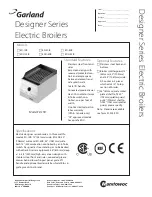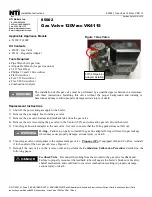
B
Amount of fuel required in kg/h
Q
N
Required rated heating output in kW
H
u
Net calorific value in kWh/kg
η
System efficiency in %
Energy density of various fuel types compared with fuel oil (standard values)
Tip/
Stack density
Fuel oil equivalent
kilogram
Fuel oil equivalent
litre
840 kg/m³
0.84 kg
1.00 l
Fuel oil
860 kg/t.m³
1.28 kg
1.49 l
Anthracite
650 kg/t.m³
2.16 kg
3.33 l
Wood pellets
459 kg/t.m³
2.35 kg
5.11 l
Beech logs
297 kg/t.m³
2.30 kg
7.73 l
Spruce logs
217 kg/t. m³
2.25 kg
10.36 l
Woodchips
1.2 Principles of wood pellet combustion for generating heat
What are wood pellets?
Wood pellets are made from 100 percent natural wood remnants. This raw material is waste matter created by the wood industry in large
volumes through planing or sawing. Wood remnants are compressed under high pressure and formed into pellets, i.e. pressed into a cylindri-
cal shape.
The raw material is stored and transported under completely dry conditions. System users should also ensure completely dry storage condi-
tions. This is the only way to guarantee optimum and effective combustion.
Pellet requirements
For heat generation, use wood pellets that have the following proper-
ties:
■ Diameter of 6 mm
■ Length of 3.15 to 40 mm (1 % up to 45 mm)
■ Max. moisture content of 10 %
The wood pellets used for combustion in the solid fuel boiler must
correspond to the requirements of EN ISO 17225-2.
Requirement
ENplus-A1
EN ISO 17225-2 quality A1
Diameter
mm
6 ± 1
D06
Length
mm
A maximum of 1 % may be lon-
ger than 40 mm, but no longer
than 45 mm.
3.15 to 40
Bulk density in the delivered condition
kg/m³
600 to 750
BD600
Net calorific value in the delivered condition
MJ/kg
kWh/kg
≥ 16.5
≥ 4.6
Q16.5
Q4.6
Water content in the delivered condition
m-%
≤ 10
M10
Fines content in the delivered condition
m-%
≤ 1
F1.0
Mechanical strength in the delivered condition
m-%
≥ 97.5
DU 97.5
Ash content, free from water
%
≤ 0.7
A0.7
Principles of wood combustion
(cont.)
8
Viesmann
VITOFLEX 300-UF
1
5682428









































